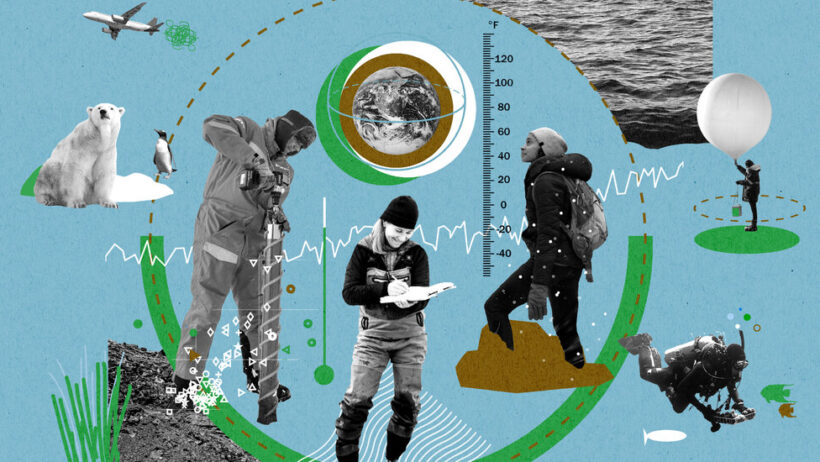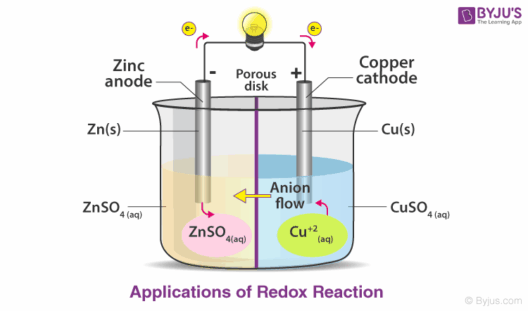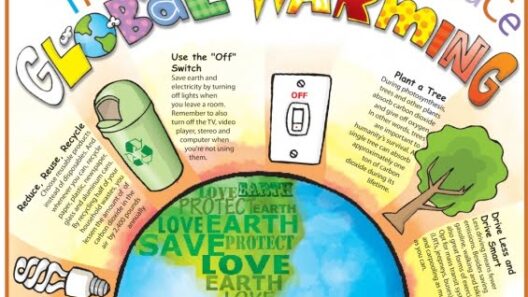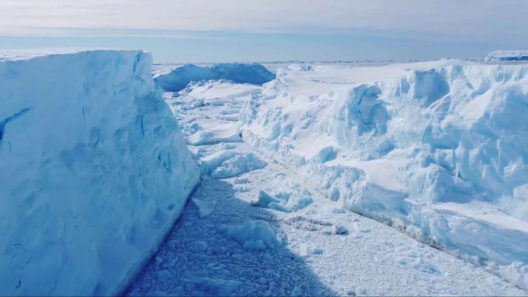The effects of global warming are profoundly evident, manifesting across various environments—from the majestic ice caps to the vast oceans. But, one might ponder: how can we truly visualize these alterations, and what challenges arise from their implications? The beauty of our planet belies the gravity of these changes, encapsulating an urgent narrative that demands attention.
Let us begin our exploration at the ice caps, once emblematic of the Earth’s resilience, now increasingly synonymous with vulnerability. The Arctic and Antarctic regions have been witnessing unprecedented thaws, a phenomenon that has escalated in recent decades. Satellite imagery vividly illustrates the retreat of glaciers; for instance, the Greenland Ice Sheet—once considered a bastion of ice—has diminished dramatically. Comparisons of photographs taken over mere decades reveal an alarming trend: what were once colossal ice formations have regressed to mere remnants.
As the ice recedes, one must consider the cascading effects of such changes. Increased freshwater entering the ocean disrupts local ecosystems and alters oceanic currents, which are pivotal in regulating climate. One might ask: if the ice caps are like the Earth’s air conditioner, what will happen when they can no longer function? The challenge lies not just in the loss of ice but in the subsequent ripple effects throughout the globe.
Moving from the polar extremes to the temperate zones, a different but equally disconcerting narrative unfolds in the oceans. The warming waters are transitioning into a vivid tableau that reveals the hidden peril of marine life. Coral reefs, often referred to as the rainforests of the sea, are bleaching as ocean temperatures rise. This phenomenon, intensified by climate change, threatens the rich biodiversity that thrives within these ecosystems. The visual starkness of bleached corals against a backdrop of vibrant marine life serves as a glaring reminder of the delicate balance that sustains our oceans.
Moreover, the oceans are absorbing much of the excess carbon dioxide created by human activities, resulting in ocean acidification. This transformation obscures a once-thriving underwater landscape. Shellfish and other marine organisms that rely on calcium carbonate for their shells are jeopardized, presenting both ecological and economic concerns. The visual contrast between healthy and acidified waters dramatizes the urgency of addressing climate change. Can we afford to ignore these visual warnings, or do we dare to confront the challenge of protecting our oceans?
The interplay between ice caps and oceans does not merely signify physical changes; it embodies what some scientists term a feedback loop. For instance, as polar ice diminishes, the Earth’s albedo effect—the reflective quality of surfaces—declines, leading to greater absorption of sunlight and further warming. This self-perpetuating cycle raises profound questions. How do we reverse such an entrenched process? What steps can we take to break free from this insidious feedback loop?
Let us now contemplate the visual evidence presented by extreme weather events, increasingly classified as manifestations of climate change. Hurricanes, floods, and droughts have become more severe and frequent. Dramatic images of desolated landscapes and flooded cities reverberate through media channels, capturing the attention of millions. These visual narratives are not just statistics; they are real consequences faced by communities worldwide. The challenge intensifies; how can we mobilize collective action in the face of such overwhelming evidence?
The visual spectrum of global warming extends beyond the realms of ice and water. Forests, too, play an instrumental role in this tale. As temperatures rise and precipitation patterns shift, forests face the dual threats of wildfires and disease. Aerial views of smoke-laden skies and fire-scarred lands communicate a powerful message: these ecosystems, which serve as carbon sinks, are succumbing to the very crisis they help mitigate. Images of devastated landscapes pose stark questions—what is lost when forests vanish? How can we rekindle the essence of these vital ecological assets?
As we navigate this intricate tapestry woven from ice, water, and terrestrial life, it’s crucial to acknowledge the visual artists and scientists who endeavor to document these shifts. Their work transcends mere photography; it serves as a catalyst for awareness, urging communities and policymakers alike to take actionable steps toward combatting climate change. Exhibitions that juxtapose images of the past with those of the present foster a sense of urgency—how can we inspire each other to act on behalf of our planet?
Visual evidence of global warming’s multifaceted impact compels us to confront uncomfortable realities while also igniting creativity in how we address these challenges. Do we possess the courage to face these challenges head-on? The ocean’s depths and the ice’s starkness beckon us to the forefront of climate advocacy, urging immediate, impactful actions that unite us in this global crusade.
In conclusion, as visual evidence paints a compelling narrative of global warming’s adverse effects, our collective challenge is to transform understanding into action. We must muster resolve and strategize efficiently, employing innovative solutions. Every visual story captured is a reminder—a poignant call to arms—to safeguard our planet from the inexorable march of climate change. The journey from ice caps to oceans is not merely a testament to what has been lost but a challenge to what can be preserved through awareness and collective responsibility.








